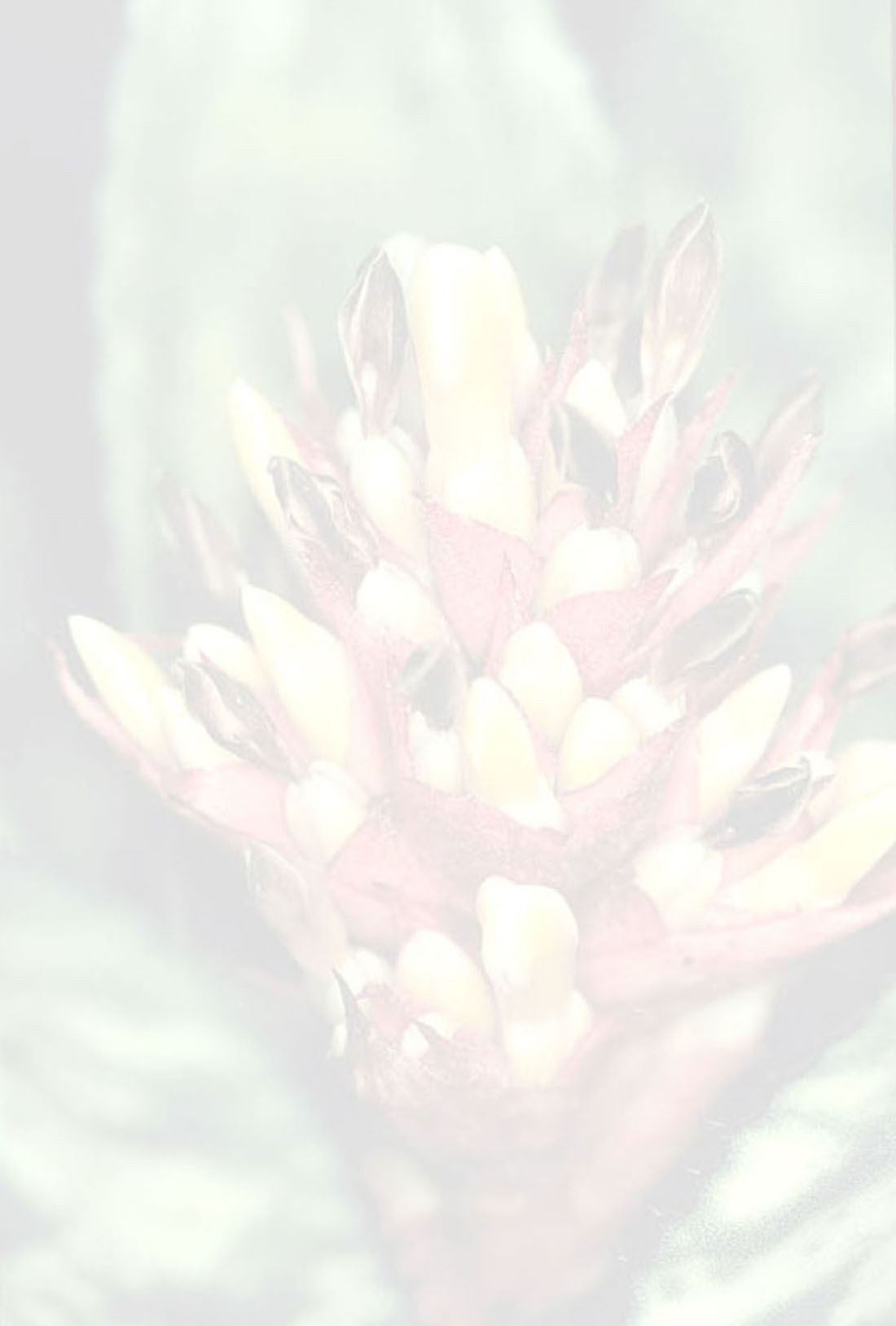Aechmea confusa H.Luther
(comb. nov.)
Literature references:
*move your mouse pointer over the page numbers to see comment
Comments:
- TYPE: Lee Moore A-120 (Holotype: US). PERU. Prov. Loreto: Amazon lowland, cultivated, 1960. Basionym: Greigia amazonica L.B. Smith, Phytologia 8: 226. 1962; not Aechmea amazonica Ule, Verh. Bot. Ver. Brand. 48: 136. 1907.
The type specimen is an odd caulescent (etiolated?) plant with a very small (45 X 40 mm) inflorescence. The inflorescence is clearly central with a short scape concealed by the inner leaf sheaths. The "outer bracts" are in reality primary bracts subtending two-flowered branches. The floral bracts are elliptic, somewhat asymmetrical, carinate and minutely serrulate. The petals (poorly preserved) appear to be free and have dried black.
Correspondence from Lee Moore (8 Dec. 1997) in response to questions concerning the origin of his collection reveals that his A -120 was from "either the Itaya or Nanay Rivers not far from Iquitos because that was all that was accessible to me at the time." These general localities are close to the collection sites of a pair of more recently collected and cultivated specimens that appear to represent the same taxon: "near Iquitos" S. and H.L. Smith s.n. and "from the Napo River, Peru" A. McCrory s. n. Both of these collections are deposited at (SEL).
The two vouchers cited immediately above have much larger inflorescences (8-10 X 8-10 cm) than the type, with longer floral bracts (26-33 vs. 24-25 mm) and sepals (28-35 vs. 25 mm) with free unappendaged white petals. I consider them to be conspecific and more typical for the species. Aechmea confusa is similar to the Ecuadorian A. kentii (H. Luther) L.B. Smith and M.A. Spencer (Basionym: Streptocalyx kentii H.Luther), but differs by having sessile to subsessile branches (vs. 6-18 mm pedunculate), longer floral bracts (24-33 vs. 12-22 mm long), longer sepals (25-35 vs. 19-21 rnm long) and white (vs. purple) petals.
With the removal of this taxon from Greigia the remainder of the genus consists of coolgrowing, mostly high elevation species distributed from Mexico to Chile and Bolivia. —See Selbyana p. ????

